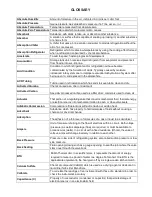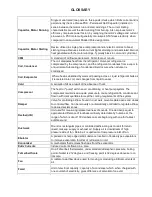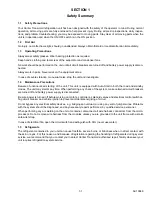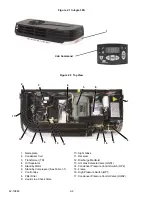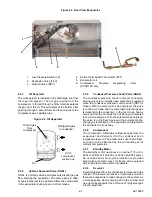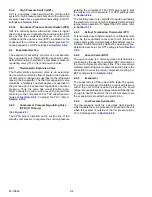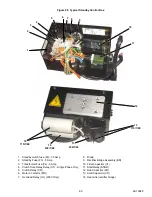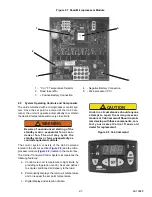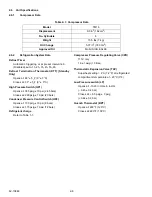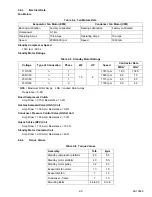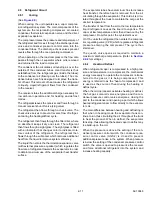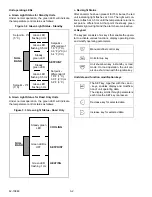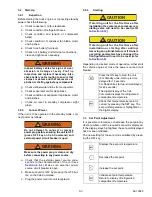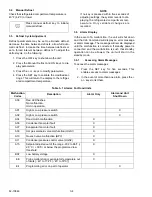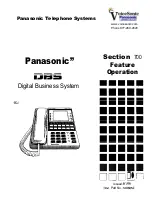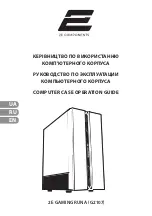
2-3
62-10848
Figure 2.3 Rear View Evaporator
1. Low Pressure Switch (LP)
2. Expansion Valve (TXV)
3. Quench Valve (BPV)
4. Defrost Termination Thermostat (DTT)
5. Evaporator coil
6. Compressor Pressure Regulating Valve
(CPR)115V only
2.3.3
Oil Separator
The oil separator is installed in the discharge line from
the road compressor. The hot gas coming from the
compressor is forced through a filter which separates
the gas from the oil. The oil collects at the bottom after
passing through a second filter and then returns to the
compressor via a capillary tube.
Figure 2.4 Oil Separator
2.3.4
Hot Gas Solenoid Valve (HGS1)
HGS1 is normally closed and prevents discharge gas
from entering the evaporator. The valve opens to allow
hot gas refrigerant to be delivered from the compressor
to the evaporator during heat or defrost modes.
2.3.5
Condenser Pressure Control Valve (HGS2)
The condenser pressure control valve (or condenser
closing valve) is a normally open valve that is powered
when the condenser pressure control switch (HP2) is
closed. With the solenoid coil de-energized, the valve
is in the cool mode and the compressor discharge gas
is delivered to the condenser. In the cool mode, heat is
removed from the air inside the truck body and rejected
to the surrounding air. With the solenoid coil energized,
the valve is in the heat mode and the compressor dis-
charge gas is diverted to the evaporator and rejected to
the air inside the truck body.
2.3.6
Compressor
The compressor withdraws refrigerant gas from the
evaporator and delivers it to the condenser at an
increased pressure. The pressure is such that refriger-
ant heat can be absorbed by the surrounding air at
ordinary temperatures.
2.3.7
Standby Motor
The standby motor operates on nominal 115v-1ph-
60hz or 208/230v-1ph-60hz or 230v-3ph-60hz power.
An overload and short cycle protection is provided
along with automatic reset. Units are also equipped
with a remote mounted power receptacle.
2.3.8
Receiver
Liquid refrigerant from the condenser is delivered to the
receiver. The receiver serves as a liquid reservoir when
there are surges due to load changes in the system; as
a storage space when pumping down the system and
as a liquid seal against the entrance of refrigerant gas
into the liquid line.
Oil and gas
from
compressor
R
efrigerant gas
to condenser
Oil to
compressor
suction line
Oil



